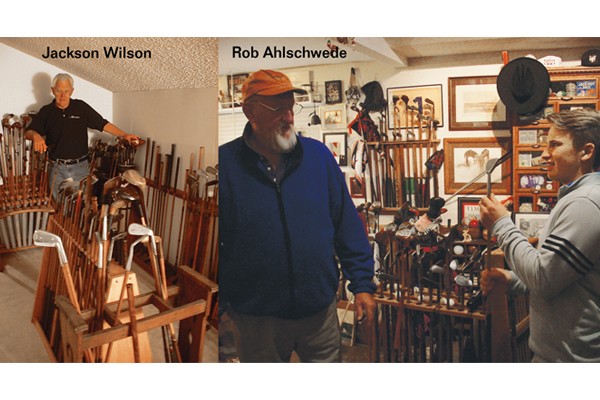Tickets on sale for LPGA major event at Sahalee
Photo by Scott Bisch

By Brian Giboney, Special To Inside Golf
Prior to hickory golf tournaments becoming what they are today there were simply hickory golf collectors. These collectors were people who saw value in golf’s past and foresaw value that would be realized down the road. How right they were. When golf transitioned from hickory shafts to steel shafts in 1936, wood shafted golf clubs headed to the dusty corners of the garage, to the basement, and to attics across the land as their value on the golf course plummeted.
Then 30+ years later those former golfer’s children started inheriting their father’s old wood sticks and started to see value – “Hey – these things are cool” – this was around the late 1960’s and early 1970’s when collectors groups started popping up. Hickory golfers were so scarce in those days players used to mail in their scorecards to be counted in golf tournaments. Yes you read that right. Hickory golfers in the late 1960’s and early 1970’s mailed in their score cards to be counted in golf tournaments that were not even held on the same course.
Much has changed since those days and so has the value to hickory clubs. In the Northwest there are only a handful of collectors with collections worthy of a Hickory Corner article. Word on the cobblestone is a collection in the Portland area is a must see and here in the greater Seattle there are two. Over back-to-back weekends I hit the freeway and drove to see the collections of Rob Ahlschwede and Jack Wilson.
Since my travels started with Rob we will start his collection. The tour began in Rob’s garage where his workbench is set up as well as several hundred hickory clubs. Not knowing the full extent of the collection figured – “Wow – this is impressive” then was invited to see the real collection inside. Upon entering this large rec-room converted into golf museum, one adjective best describes the sensation – JAW-DROPPING. Rob started collecting in the 1970’s and joined the Golf Collector’s Society in the early 1980’s. His 35+ years of collecting and playing hickory golf clearly shows in his collections. We are talking about thousands of pieces from the hickory era and not just clubs. Hats, bags, markers, flags, tees, glass milk jars with hickory golfers on them. Photos, paintings, books, and other items one would not ever consider in the evolution into the modern game of golf we enjoy today. The collection reveals a lot of the man who grew up in Omaha, Nebraska and fell in love with hickory golf over 35 years ago.
Next on the travel plan was to see Jack Wilson’s collection. Like my visit with Rob, this tour started in the garage, and again hundreds of hickory golf clubs. This time more hickory woods which was impressive knowing how hard good brassies and spoons are to find. Then it was into the warmth of the home to see the real gems. Again JAW DROPPING. This time in the sheer quantity of “players” which are hickory clubs ready to go play golf. Jack’s collection is much different than Rob’s and you can see the contrast in the two photographs. Rob’s collection made me respect his dedication and overall breadth of knowledge and desire to learn everything there is to know about hickory. Two minutes into seeing Jack’s collection all I wanted to do was go play some golf even though it was pouring rain outside.
Jack also hails from Omaha, Nebraska and migrated to the Northwest after living in Colorado and Oregon for many years and collecting all along his migration path. Ironically these two long time friends have never sold a club to each other. There is a thick layer of mutual respect for the way they each go about collecting hickory golf.
The Hickory Corner asked both Rob & Jack the same question for you readers who might have an interest in collecting hickory golf items.
THC: What advice do you have for new collectors?
Rob: Don’t do it! Not really, if you love something it is great to have a few of those things around for comfort. Best advice is to look for the best items: Clubs with good deep stamps and in good condition. If a club is very significant stamps are not as important. Don’t be an accumulator–except to use more common items to trade up to more important pieces for the collection. Also, specializing in one area makes it easier–books only, or clubs only, or ceramics or artwork. And, you better love what you are after!!
Jack: If you think you want to get serious about hickory golf get your hands on some good reference materials. Buy what catches your eye. Get involved with people that can help you. We have a wonderful group of hickory players and collectors here in the Puget Sound area [Jack is a member of NW Hickory Players and also participates in AP National Hickory events]. I love the history and traditions of golf. Myself and others in our region play hickories often. Anyone is welcome to come play or ask questions.
As for which collection is better. The Hickory Corner cannot possibly choose, both Rob and Jack deserve major credit for their collections and their passion for hickory golf the past 30+ years. And hickory golf is better off because of them.